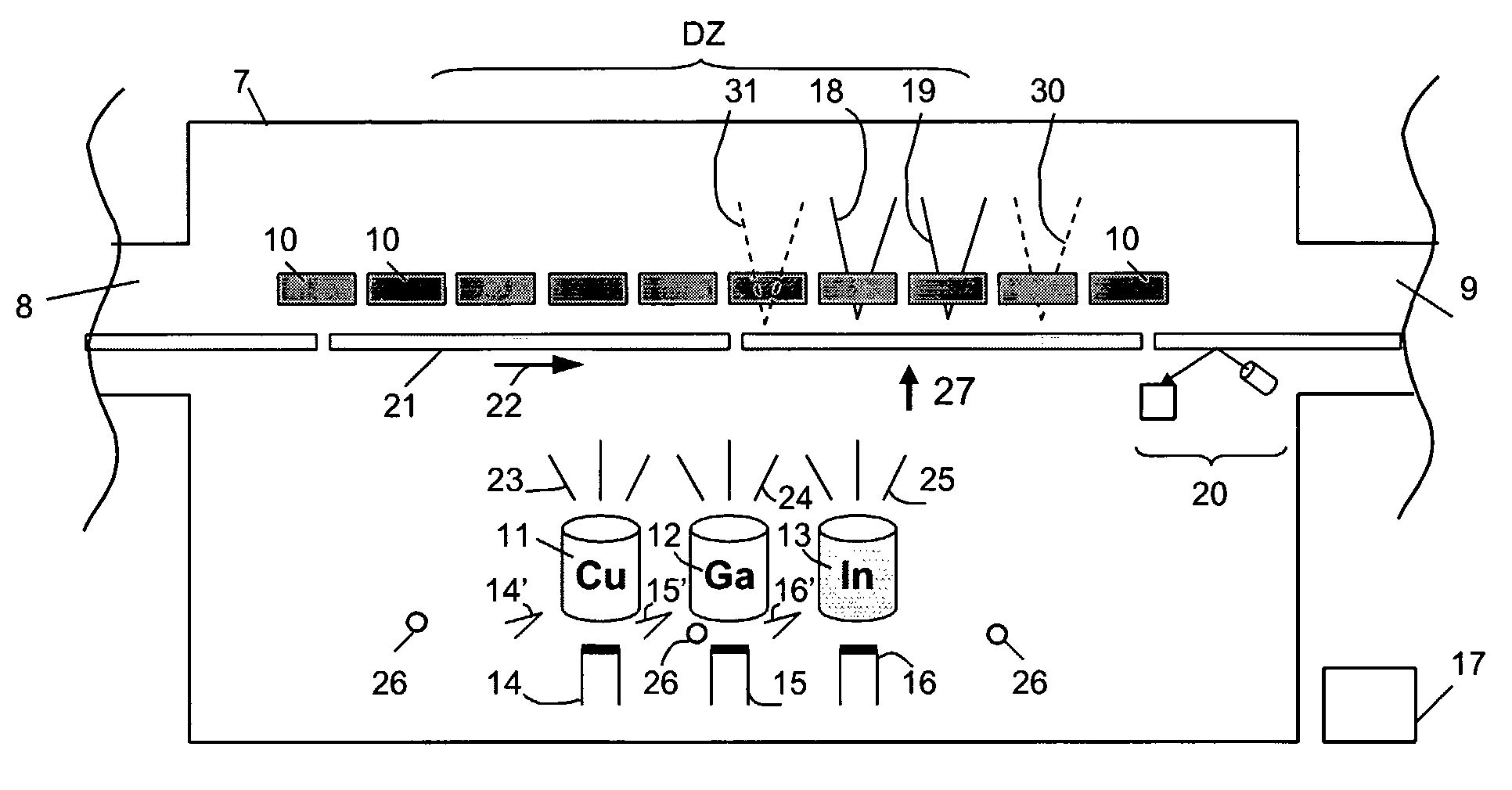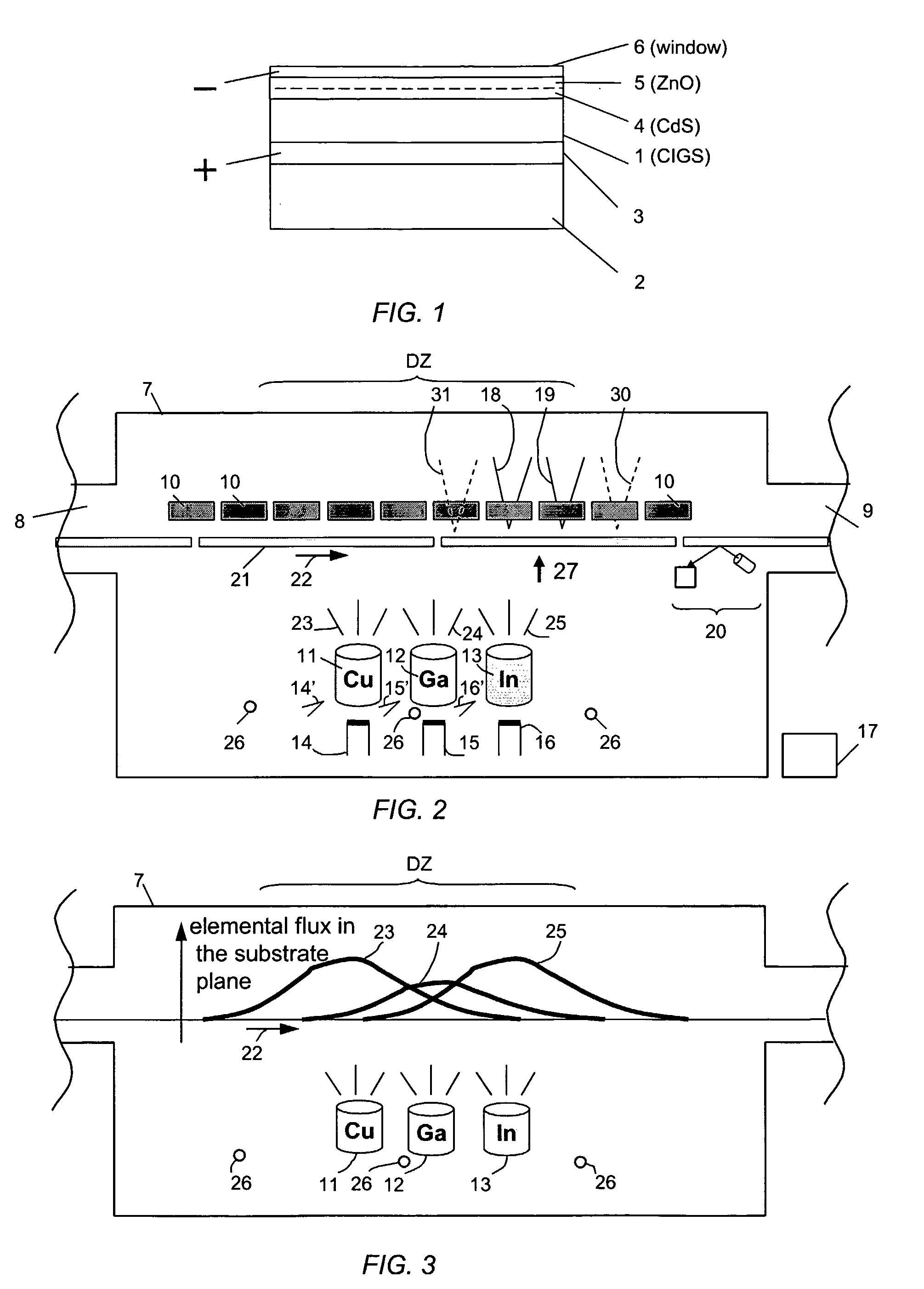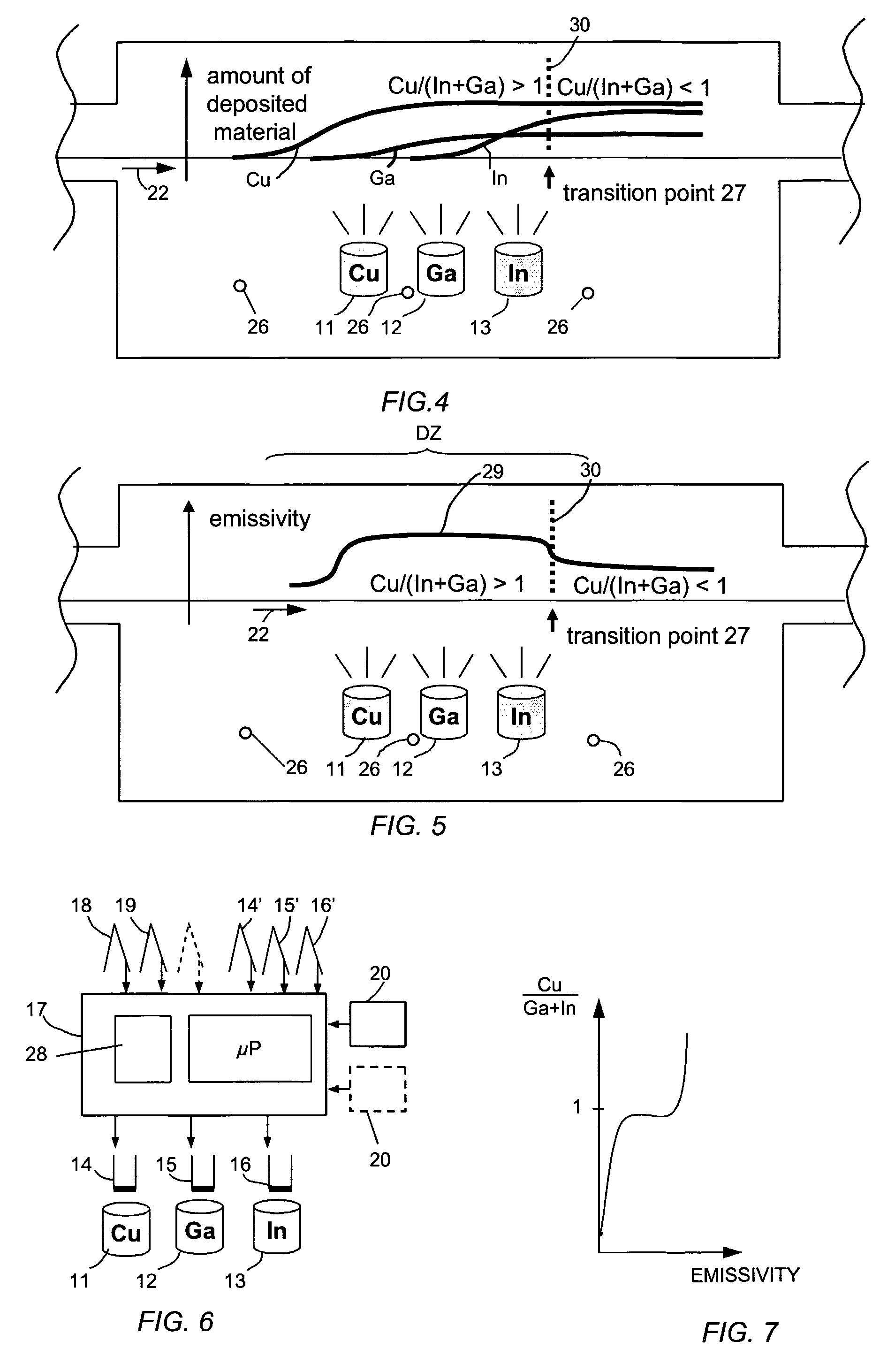Method and Apparatus for In-Line Process Control of the Cigs Process
a technology of in-line process control and cigs, which is applied in the direction of sustainable manufacturing/processing, final product manufacturing, coatings, etc., can solve the problem that the patent does not disclose any means, and achieve the effect of improving the precision, high substrate output rate, and accurately controlling the thickness and composition of the cigs material
- Summary
- Abstract
- Description
- Claims
- Application Information
AI Technical Summary
Benefits of technology
Problems solved by technology
Method used
Image
Examples
Embodiment Construction
[0037]Refer to FIG. 1. The commonly used way of fabricating CIGS solar cells is includes the growth of a CIGS layer 1 on a substrate material 2, such as sheet glass or metal foil, which has been coated with a layer of Mo 3. The Mo layer serves as back contact of the solar cell. The CIGS growth is followed by the formation of a pn-junction by deposition of a buffer layer 4, typically 50 nm of CdS, an optional high resistivity thin layer of ZnO 5 and a front contact of a transparent conductive oxide 6. One critical factor for obtaining solar cells with high light to electricity conversion efficiency is the quality of the CIGS material.
[0038]Although the invention will be described in connection with a horizontal deposition system, it should be understood the present invention can be used with a vertical deposition system. In FIG. 2 the deposition system comprises a process chamber 7 for the inventive fabrication of a CIGS layer. The process chamber is shown to comprise an inlet 8, an ...
PUM
| Property | Measurement | Unit |
|---|---|---|
| Temperature | aaaaa | aaaaa |
| Thickness | aaaaa | aaaaa |
| Composition | aaaaa | aaaaa |
Abstract
Description
Claims
Application Information
 Login to View More
Login to View More - R&D
- Intellectual Property
- Life Sciences
- Materials
- Tech Scout
- Unparalleled Data Quality
- Higher Quality Content
- 60% Fewer Hallucinations
Browse by: Latest US Patents, China's latest patents, Technical Efficacy Thesaurus, Application Domain, Technology Topic, Popular Technical Reports.
© 2025 PatSnap. All rights reserved.Legal|Privacy policy|Modern Slavery Act Transparency Statement|Sitemap|About US| Contact US: help@patsnap.com



